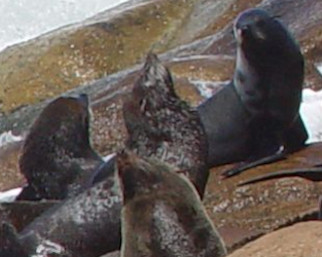About Uruguay
Montevideo: The southernmost capital city in the Americas is also the largest city in Uruguay, home to roughly one-third of the country’s 3.3 million population. It was established in 1724 by a Spanish soldier, Bruno Mauricio de Zabala, as a strategic move in the Spanish-Portuguese dispute. It was under brief British rule in 1807. Montevideo has consistently been rated as having the highest quality of life of any city in Latin America, and has held this rank every year during the last decade. It has a vibrant, eclectic cultural life and an active hub of commerce as well as its chief port, which includes the city’s oldest buildings, several museums, art galleries, and nightclubs, with Sarandí Street and the Mercado del Puerto being the most frequented venues of the old city. On the edge of Ciudad Vieja, Plaza Independencia is surrounded by many sights, including the Solís Theatre and the Palacio Salvo; the plaza also constitutes one end of 18 de Julio Avenue, the city’s most important tourist destination outside of Ciudad Vieja. Apart from being a shopping street, the avenue is noted for its Art Deco buildings, three important public squares, the Gaucho Museum, the Palacio Municipal and many other sights. The avenue leads to the Obelisk of Montevideo; beyond that is Parque Batlle, which along with the Parque Prado is another important tourist destination. On the coast, 13 kilometers/8.1 miles of sand beaches and Punta Gorda attract visitors.
Colonia Del Sacramento: A charming and lively town that was originally founded by Portuguese settlers arriving from Brazil in 1680, Colonia’s old town is a declared UNESCO heritage site. The town was originally used as a smuggling staging post, but today its trim colonial Centre, with narrow, cobbled streets and fine architecture, is a charming and interesting place to explore. The small historic Centre has nine small museums, which can be visited with only one entrance ticket, as well as many good quality restaurants.
Carmelo: Carmelo is perhaps Uruguay’s best-kept secret. With its golden, riverfront beaches, rich cultural offerings, and up-and-coming wine region, Carmelo is an ideal destination for honeymooners and luxury travel enthusiasts alike. The city’s main attraction, is its many outdoor pursuits. Visitors can go horseback riding through the woodlands and enjoy the unspoiled beauty of the countryside, head out on a boat along the Rio de la Plata, paddle away the day on a canoe trip, or even take polo lessons.
Coastline From La Barra To Jose Ignacio: Only 20 minutes from the jarring, glitzy resort fashioned Punta del Este, expansive golden beaches and low headlands stretch northeast along a single coast road connecting a ribbon of beach settlements. This is where you will find La Barra, Manantiales and José Ignacio, each emptier and more low-key than the last. Little shops and restaurants sell floaty dresses and Gucci sunglasses, dulce de leche ice cream, the local Chivito sandwich and Japanese sushi. This area is to Uruguayans as the Hamptons are to New Yorkers; a chic retreat from city life that exudes barefoot elegance with a distinctly South American, bohemian charm.
Laguna de Rocha: Has the status of Biosphere Reserves designated by Man and the Biosphere Programme (MAB) of UNESCO.Through natural waves but also through artificial dam failures, the water of Laguna de Rocha mingles temporarily with the salt water of the Atlantic Ocean. As a result, the amount of the salt concentration in the lagoon water influences the biological conditions as well as the physical and chemical parameters.Laguna de Rocha is known for its richness of fish, crab, shrimp and molluscs, which were not only used by the fishermen on the southern shore lines. Many birds, also Black Neck Swan (Cygnus melancoryphus) and the endemic Coscoroba Swan (Coscoroba coscoroba) find here a rich food supply. More than 200 species of breeding and migratory birds, also threatened species such as Chilean Flamingo (Phoenicopterus chilensis), Olrog´s Gull (Larus atlanticus) and Black-and-white Monjita (Heteroxolmis dominicana) use the lagoon.


